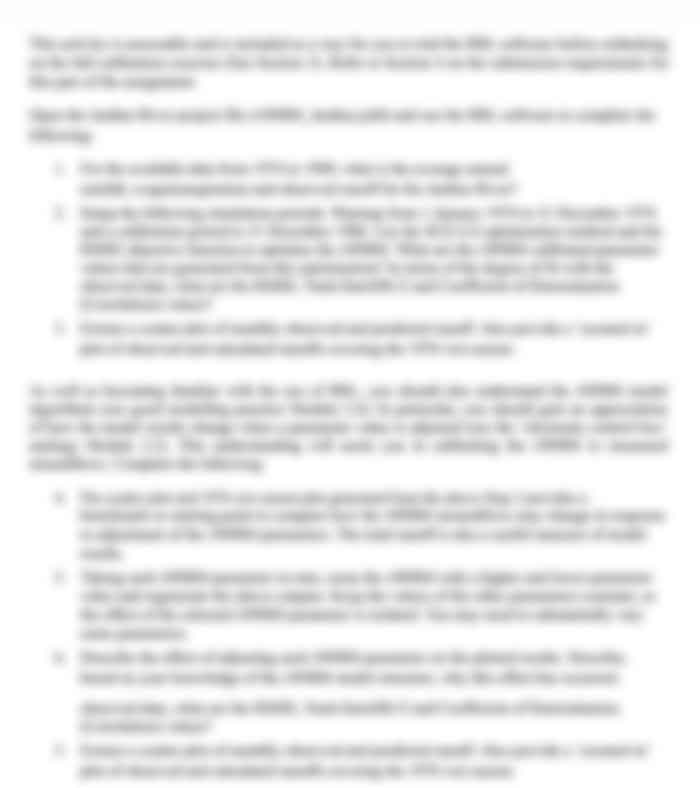25300 Fundamentals of Business Finance Assignment
- Subject Code :
25300
- Country :
Australia
- Collins Foods Limited (hereafter known as Collins) ordinary shares are listed on the Australian Securities Exchange (ASX). Collins owns and operates the KFC, Sizzler and Snag Stand brands. Although there are over 600 KFC stores across Australia, Collins is the largest KFC franchisee in Australia. According to the recent announcement made to the ASX on 28/06/2016 titledPresentation re FY16 Financial Results (hereafterPresentation), Collins is keen to pursue further growth opportunities such as building 7 to 8 new stores. Collins has already performed a substantial amount of data analysis related to one particular planned new store in the north-western Sydney suburb of Vineyard. The planned new store satisfies many of the criteria that are likely to ensure its financial success such as the recently completed nearby North-West rail link, the forecasted large population growth rate, and access to major arterial roads. However, costs associated with the construction of a new KFC restaurant and the operating expenses are substantial. Therefore, before Collins commits to building the new restaurant a financial analysis is needed to determine if it will contribute to the goal of creating wealth for its shareholders.
- You are employed in Collins finance department and have impressed senior management with your aptitude for financial analysis. This talent was developed through the practice-oriented assignments that you completed at University. You recall how exciting it was learning about listed companies by searching and reading announcements made to the ASX. The Chief Financial Officer (CFO) has asked you to perform a financial analysis of the planned Vineyard store using a purpose-built preformatted EXCEL spreadsheet. The CFO has suggested you liaise with company employees from a variety of different departments to collect the information that is necessary to perform the analysis. You will also search through public documents to identify some of the assumptions that will be required in your financial analysis, and to locate the data required to analyse Collins equity and debt. Your analysis will be provided to the Board of Directors who must approve substantial capital expenditures.
- The two major cash outflows associated with a new restaurant are the cost of the building and the equipment such as grills, fryers and refrigeration. The directors are accountable to the shareholders and so a rigorous financial analysis is necessary to be confident that the investment in the new Vineyard KFC restaurant is justified. The following paragraphs contain a substantial amount of information that has been gathered from across the business and it is your job to determine which information is relevant to the analysis.
- Forecasted sales in 2017 for the new Vineyard storeThe annual sales for a new store are difficult to predict. However, Collins is confident that the Vineyard KFC store can achieve sales in the first year of operation that are equal to an average KFC store. You read thePresentationto identify the following two figures
a) FY16 Statutory Revenue and
b) Number of restaurants at Year end
and then calculate an average sales figure per KFC restaurant in 2016. However, because the new Vineyard store opens in 2017, theaverage sales figure needs to beadjusted for oneyears sales growth. Consequently, you assume that sales in 2017 increase at the same rate as the 2016 KFC Same-Store-Sales (SSS) growth rate (using Collins Foods methodology).
Forecasted sales for 2018 (and beyond) for the new Vineyard storeCollins assumptions regarding the growth rate in sales for KFC restaurants are contained in Note F5 of the 2016 annual report that was announced to the ASX on 28/07/2016. For simplicity you assume that sales for the Vineyard restaurant for 2018 until 2021 increase at the annual cash flow growth rate stated in the first paragraph. Sales from 2021 then increase at a marginally slower annual rate, which is specified in the second paragraph of Note F5.
- Collins owns a block of land at Vineyard on which they plan to build the new KFC. In 2013 when Collins constructed the $1.7 million Rouse Hill KFC restaurant they also purchased salt processing equipment which is situated on the land at Vineyard. This equipment is outdated and must be sold before the Vineyard store is built. The processing equipment had a capital cost of $100,000 three years ago. It has a remaining depreciable life of two years and a buyer has agreed to pay $84,000 cash today for the equipment. It will have zero value in two years. Because the $100,000 cash outflow relating to the salt processor has already occurred the accountant suggests it be treated as a sunk cost in the analysis. Collins will continue to own the land if the Vineyard KFC store does not proceed.
- Collins 2011 prospectus reveals that KFC enjoys gross profit margins of approximately 54%. Therefore, your analysis assumes that costs of goods sold at the Vineyard store are 46% of sales. Fixed costs at the Vineyard store in 2017 are $240,000. Management is confident that with rigorous cost control they will be able to contain the increase in fixed costs to 2% p.a. for each subsequent year. If the Vineyard KFC is built, Collins anticipates that total cash operating expenses in the first year of operation will equal 26% of sales. With the greater economies of scale associated with increasing annual sales and a disciplined focus on operational performance (Source:Presentation, Page 4), management are confident they can achieve a 0.5% reduction in operating costs to 25.5% in 2018, and then continue to achieve further annual reductions of 0.5% for each following year.
- Starting in 2017, employees at the Vineyard KFC will receive annual training. Collins performs all training in-house using a dedicated facility that was established in 2011. The facility has an annual budget of $655,000 and inducts new employees in all aspects of proper food handling associated with working in KFC, Sizzler and Snag Stand stores. Ordinarily, Collins would charge an arms-length amount of $75,000 per annum staff training. However, the training division has sufficient spare capacity to train the Vineyard stores employees without the facility incurring any additional costs. The accounts department recommends internally invoicing the $75,000 training expense to the Vineyard store each year.
- The capital cost of the Vineyard KFC building is expected to be $2.3 million today (similar to the estimated cost of an average store according to page 6 of thePresentation). Collins already has $23,512,333 cash and it plans to use $700,000 cash to pay for the building to reduce the cash cost to just $1.6 million. Throughout 2015 Collins incurred $260,000 of expenses on external architectural plans relating to the new restaurant. There is some debate among management about whether the cost of these plans should be classified as a tax-deductible expense in the analysis.
- For taxation purposes the new building has a twenty-year life. However, Collins will perform the financial analysis of the Vineyard store over a ten-year time period. The new store will also require $300,000 worth of deep fryers and refrigeration equipment today. The Australian Taxation Office (ATO) confirms that fryers and refrigeration equipment have a five-year tax life. In Collins experience, if the fryers and refrigeration equipment areregularly maintained they can actually operate them effectively for a full six years before they need replacing. The replacement cost in the year 2022 is also assumed to be $300,000. Collins management accountants depreciate all assets over an operational six-year life.
- Collins research department has spent $130,000 in recent years studying digital menu boards for its KFC stores. To ensure this expense is not wasted the directors want to include it in the analysis as a cash outflow in 2016. They believe that it will then earn a fair return.
- To maintain a AA+ credit rating, Collins will borrow $1.2 million today to finance the Vineyard store. The ten-year interest-only loan has annual interest repayments of $48,000 (assuming a 4% p.a. rate). Collins accountant confirms that interest is classified as a business expense and is tax deductible.
- Collins plans a promotional campaign to generate publicity for the Vineyard stores grand opening. The marketing department has budgeted $85,000 of advertising for the grand opening. Because this expense will reduce the new stores profitability in 2016, Collins managers have suggested that the advertising expense be spread out over the new stores ten year useful life. The ATO states that expenses associated with the Vineyard KFC restaurants grand opening can be claimed as a business expense in the year incurred. Collins total KFC advertising budget for 2017 is $3.4 million and predicted to increase by $200,000 each year. If the Vineyard store opens, the annual advertising budget will remain unchanged. For cost accounting purposes Collins must allocate overheads across each business unit. Therefore, it is proposed that the Vineyard store be assigned 1/192 of the total KFC advertising budget.
- Collins assumes that the Vineyard building can be sold for $400,000 in the year 2026. At any point in time the resale value of the fryers and refrigeration equipment is just $26,000. In ten years time Collins assumes that it will have cash holdings of $12 million. You note the ATO regulation that all non-current assets be depreciated to zero.
- Collins nearby Rouse Hill KFC restaurant has annual sales of $2,500,000. If the Vineyard store proceeds then management expects that the Rouse Hill stores sales will decrease by $150,000 p.a. However, an offsetting effect of opening the Vineyard store is that customers who currently purchase food at nearby non-Collins owned restaurants in the vicinity will instead purchase their food from the Vineyard KFC. Management expects that the sales forecasts for the Vineyard store (in paragraph 5) include $340,000 sales per annum gained from restaurants that are not already owned by Collins. Management is debating if this $340,000 figure should be included in the analysis because these sales are already occurring.
- If the new Vineyard store goes ahead, then Collins will implement a rights issue to raise $800,000 from shareholders to partly finance the store. Because the capital is held in the parent company (Collins) and not at the divisional level it has been recommended that this $800,000 figure be excluded from the financial analysis. The CEOs annual salary in 2016 is $1,511,738 and is not expected to change if the Vineyard KFC opens or not.
- If the directors approve the Vineyard KFC restaurant Collins anticipates that it will require an additional $400,000 of inventory today on top of the existing level of $1.5 million, and accounts payable will increase by $270,000. Because all sales are either cash or cash equivalent, Collins does not expect any change to its existing accounts receivable balance of $750,000 if the Vineyard KFC restaurant is constructed.
- Assume the required return for KFC restaurants is 8% and that the company tax rate will remain at 30%. Sizzler restaurants and have a higher required return of 13.5% due to the higher level of risk compared to KFC restaurants.

